
🎣 Welcome to the World of Fishing! 🎣
Ahoy, aspiring angler! 🐟 Taking the plunge into the vast and exciting realm of fishing? Well, you’re in for a reel treat! Before you embark on your first fishing adventure, let’s make sure you’re all geared up and filled in with some invaluable tips from seasoned pros.
🛍️ Essential Gear for Your First Fishing Trip:
✅ Fishing Rod and Reel: Your primary tool for catching fish. For beginners, a medium-action rod is a good start.
✅ Fishing Line: Always have extra on hand. A monofilament line is versatile for most freshwater fishing.
✅ Hooks: A variety of sizes will do. Size 6 to 10 are great for beginners.
✅ Bait: Worms, insects, or artificial lures. Your bait can make or break your fishing experience.
✅ Tackle Box: To keep all your fishing tools organized.
✅ Bobbers: They’ll alert you when a fish bites!
✅ Sinkers: Weights that allow your bait to sink deeper.
✅ Fishing License: Required in most places, always check local regulations.
🤓 Quick Tips from the Pros:
🌊 Location, Location, Location: Do some research or ask locals about the best fishing spots.
🕰️ Patience is Key: Fishing isn’t always about constant action; relish the calm and patience it teaches.
🌦️ Check the Weather: Fish bite more when it’s cloudy!
📚 Know Your Fish: Understand the type of fish you’re aiming for; it helps in selecting the right bait and spot.
🚫 Respect Nature: Always clean up after yourself and follow catch and release practices if you’re not planning to eat the fish.
Armed with your new knowledge and gear, you’re all set for a successful day out in nature. Remember, every pro was once a beginner. So cast your doubts aside, reel in the excitement, and happy fishing! 🐠🎣🌊
🎣 Fishing: A Journey Beyond Just the Catch 🎣
Fishing is more than just casting a line into the water and hoping for the best. It’s a symphony of patience, anticipation, and thrill. 🌲 Connecting with nature goes beyond the aesthetics of serene water bodies and verdant surroundings. It’s about tuning into the natural rhythm, understanding the subtle whispers of the water, and observing the habits of the creatures below.
For many, fishing is not just a pastime; it’s a meditative experience, a break from the humdrum of daily life. Whether it’s the peaceful solitude of a quiet lake or the camaraderie among fellow anglers, fishing offers an escape, a return to our primal roots, and a connection to the vast, intricate web of life.
So, as we delve deeper into the world of fishing, remember this isn’t just about the gear or the techniques; it’s about the journey, the experiences, and the stories that come alive with every catch. 🐟🌊
🎣 The Fundamentals: Understand Before You Cast 🎣
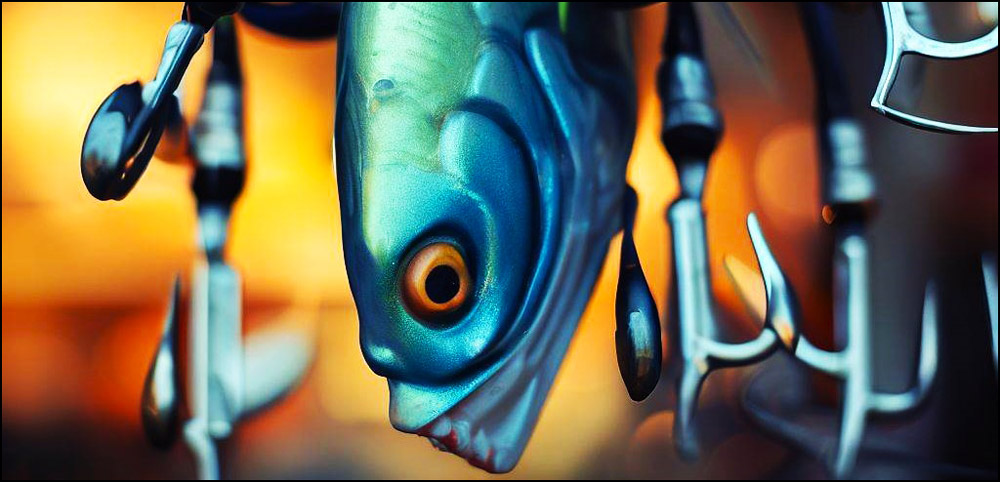
🧠 The Fisherman’s Mindset: A Dance Between Patience and Action
Before you even touch a fishing rod, it’s crucial to grasp the psyche of a successful angler. Fishing, at its heart, is a test of patience interspersed with moments of adrenaline-pumping action. Like a seasoned chess player, a fisherman must always be several moves ahead, strategizing, waiting, and knowing precisely when to make a move. But remember, even if you’ve mentally mapped out every possibility, nature has its own unpredictable rhythm. Embrace it. After all, the unpredictability is part of the allure.
📚 Basic Fishing Terminology: Speak the Language of the Angler
If you’re new to the fishing world, the jargon might seem a bit overwhelming. But fear not! Here’s a concise primer to get you started:
| Term | Description | Purpose/Usage |
|---|---|---|
| Bait | What you use to attract and catch fish. Can be live (e.g., worms, insects) or artificial (e.g., plastic worms, jigs). | To entice fish to bite, leading to a catch. |
| Tackle | Equipment used by anglers. This can include lures, bait, lines, rods, reels, nets, and trawls. | Various tools and gear used to facilitate the fishing process. |
| Casting | The act of throwing bait or a lure using a fishing rod and reel. | To place the bait or lure at a desired location in the water. |
| Reeling | Pulling in the line, either to retrieve a catch or to cast again. | To bring the bait, lure, or catch closer to the angler after casting. |
Understanding these terms is your first step in joining the vibrant community of fishing enthusiasts around the world.
🌍 Different Types of Fishing: Finding Your Passion
Fishing isn’t a one-size-fits-all sport. Depending on where you are, what you’re hoping to catch, and your personal preferences, you might find yourself drawn to one type over another. Here’s a brief overview:
- Freshwater Fishing: Done in lakes, rivers, and streams, it targets fish species like bass, trout, and catfish.
- Saltwater Fishing: As the name suggests, this takes place in the ocean. You can fish from a beach, pier, or venture out deep-sea fishing for species like tuna, marlin, or cod.
- Fly Fishing: An art in itself, fly fishing uses artificial ‘flies’ as bait, often mimicking real insects. It’s a game of skill and finesse.
- Ice Fishing: Brave the cold, drill a hole in the ice, and fish in the chilly waters below. It’s a unique experience that demands patience and layers of warm clothing!
Each type offers its own set of challenges and rewards. Do some research, try out a couple, and find the niche that resonates with your soul.
By understanding the basics, you’re already on the path to becoming a well-informed and skilled angler. Embrace the learning curve, and remember that every master was once a beginner. 🎣🌊
🎣 Essential Gear for Beginners: Starting Right on Your Angling Adventure 🎣

🎏 Choosing the Right Rod & Reel: Your Fishing Foundation
The bond between an angler and their rod and reel is special. Like a musician’s instrument, this tool can define your fishing experience:
| Rod & Reel Type | Description | Suitability/Usage |
|---|---|---|
| Spinning Rod & Reel | Perfect for beginners due to their versatility and ease of use. | Suitable for lightweight lures and baits. |
| Baitcasting Rod & Reel | Offers more accuracy but requires practice and skill. | Ideal for heavier lures and advanced techniques. |
| Fly Rod & Reel | Specifically designed for fly fishing. | These are lightweight and flexible. |
Recommendation for Starters: Begin with a medium-action spinning rod & reel. It’s versatile, user-friendly, and can handle a variety of fishing situations.
🎒 Tackle Basics: Equipping Your Toolbox
A tackle box is the angler’s treasure chest. Filling it with the right items can make the difference between a fruitful day and a frustrating one:
| Equipment | Description | Usage/Recommendation |
|---|---|---|
| Hooks | Assorted sizes to cater to different fish. | Used to catch fish; choose size based on target fish species. |
| Lures | Artificial baits like jigs, spinners, and soft plastics. | Mimic natural prey to attract fish. |
| Sinkers | To weigh down your bait or lure. | Ensure your bait/lure reaches desired depth. |
| Bobbers | These float on the surface. | Indicate when a fish takes your bait by moving or submerging. |
| Fishing Line | Spare lines are essential. | Start with a versatile monofilament line for general fishing. |
👕 Appropriate Clothing & Accessories: Dress for Success
Nature is unpredictable. Dressing right ensures you’re comfortable, protected, and ready for the day’s challenges:
| Item | Description | Purpose/Usage |
|---|---|---|
| Weather-Appropriate Clothing | Waterproof jackets for rain, insulating layers for cold, breathable fabrics for sunny days. | Adapt to various weather conditions for comfort while fishing. |
| Wide-Brimmed Hat & Sunglasses | Protect against the sun’s glare. | Improve visibility and shield from direct sunlight. |
| Water-Resistant Footwear | Boots or sandals with a good grip. | Keep feet dry and prevent slips or falls. |
| Gloves | For better grip. | Protect hands from cold, wetness, or sharp fish scales. |
📲 The Digital Age: Enhance Your Experience with Technology
Modern fishing isn’t just about traditional skills. Embracing technology can significantly improve your angling game:
| Tool/Technology | Description | Purpose/Usage |
|---|---|---|
| Fishing Apps | Apps like Fishbrain or ANGLR. | Provide insights on fishing spots, log catches, and connect with fellow anglers. |
| Fish Finders | Electronic devices using sonar technology. | Locate fish underwater, enhancing chances of a successful catch. |
| Weather Apps | Monitor meteorological conditions. | Stay informed about weather changes that can influence fish behavior and ensure safety while fishing. |
Arming yourself with the right gear is half the battle. As you familiarize yourself with these essentials, remember that experience is the best teacher. Every trip will offer new insights, refining your choices and preferences. 🐟
📍 Picking Your First Fishing Spot: A Journey to the Water’s Edge 📍

🔍 Research & Planning: Find Your Perfect Fishy Destination
Before casting your line, ensuring you’ve picked the right fishing spot is pivotal. The right location not only maximizes your chances of a catch but also enhances your overall experience.
- Online Resources: Websites such as [name of a popular fishing website] or apps like Fishbrain offer detailed maps, user reviews, and often photographic glimpses into various fishing locations.
- Local Fishing Reports: Newspapers, radio stations, or local fishing shops usually provide weekly updates on where the fish are biting. They give insights on water conditions, fish species available, and even specific bait suggestions.
- Chat with Local Anglers: No one knows the water like the locals. Stop by a nearby tackle shop or join local fishing forums online. Personal experiences and tips from local fishing enthusiasts are invaluable.
💧 Understanding Water Types: A Dive into Different Habitats
Different water bodies house different ecosystems, each offering a unique fishing experience. Here’s a quick rundown to help you decide:
- Ponds: Generally calm and shallow, ponds are perfect for beginners. Expect freshwater fish like bluegills, catfish, and sometimes even bass.
- Lakes: Larger than ponds and home to a broader range of fish species. Look out for trout, walleye, and various bass species.
- Rivers: Flowing water with potential spots like bends, mouths, and tributaries. They house species like salmon, trout, and smallmouth bass. Always be aware of currents and water safety!
- Oceans: The vast, salty expanse! Beach fishing or deep-sea fishing, oceans are a game of surprises. Expect anything from mackerels and flounders near the shore to marlins and tunas in the deep.
As you embark on your fishing journey, remember: the right spot is not just about where the fish are but also where you feel most connected to nature and at ease. The joy of fishing often lies in the tranquility and the experience, as much as the thrill of the catch. 🎣
🎒 Preparing for the Trip: Before You Cast Out 🎒
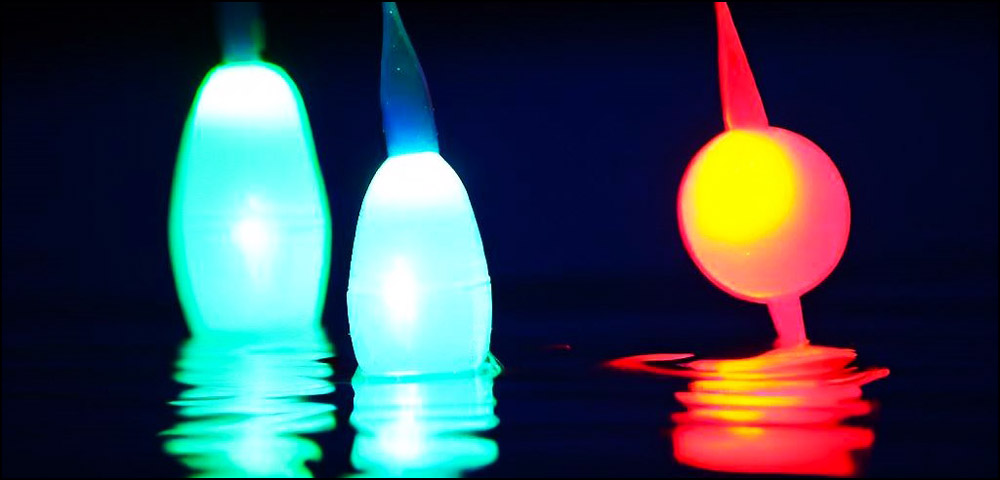
📜 Obtaining a Fishing License: Your Key to Responsible Angling
Fishing isn’t just about bait and tackle. It’s also about understanding the rules of the water and respecting the environment.
☑️ Why It’s Essential: A fishing license supports conservation efforts. The fees go back into preserving and maintaining our waterways, ensuring fish populations thrive for generations to come.
☑️ Where to Get One: Depending on your region, licenses can be obtained from local government offices, fishing shops, or even online. Always make sure you’re getting the appropriate type for the kind of fishing you’re planning.
☑️ Potential Penalties: Fishing without a license can lead to hefty fines, and in severe cases, even equipment confiscation. Don’t risk it. Play by the rules.
⛑ Safety First: Every Angler’s Priority
No catch is worth compromising safety. Here are some basic precautions every angler should take:
🟪 Handling Hooks: Always hold hooks from the blunt end. Use needle-nose pliers for removing hooks from fish or if they get stuck.
🟪 Awareness of Surroundings: Before casting, always check your surroundings to ensure you won’t hook onto people, trees, or other obstructions.
🟪 Weather Watch: Keep an eye on weather forecasts. Avoid fishing during storms or when lightning is forecasted.
🌿 Environmental Respect: Paving the Way for Sustainable Fishing
Our waterways are treasures, and as anglers, it’s our duty to ensure they remain pristine:
⬜ Leave No Trace: Whatever you bring with you, take back. This includes bait, food packaging, and any equipment.
⬜ Responsible Fishing: Understand the local fishing regulations. This might include size limits or restrictions on certain species.
⬜ Catch & Release: If you’re not fishing for food, consider catch & release. Make sure to handle fish with care, minimizing their time out of water.
In conclusion, preparation is not just about ensuring a good catch but also about being a responsible and safe angler. As the saying goes, “A well-prepared angler not only respects the fish, but also the water they swim in.” 🐟❤️
🎣 Pro Tips for Your First Cast: Hone Your Angling Skills 🎣
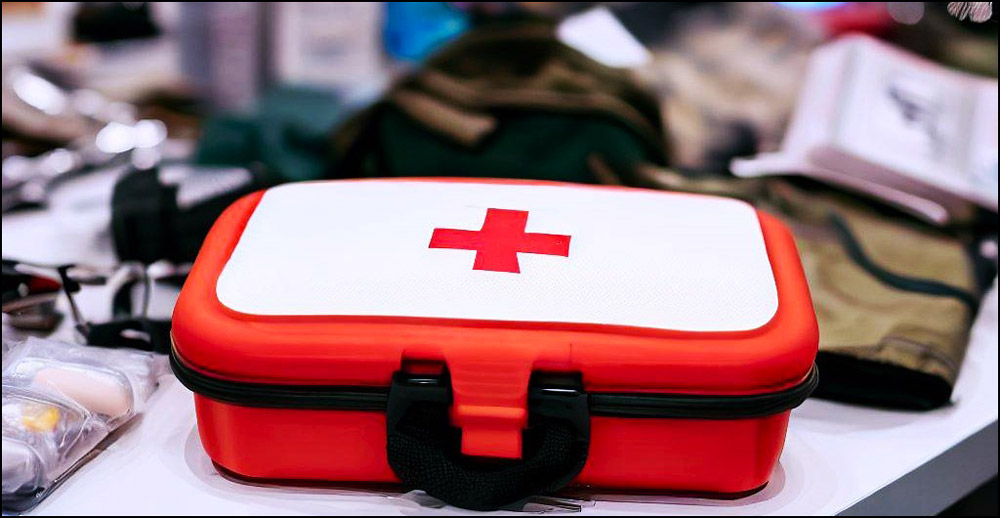
🌊 Reading the Water: Dive into the Aquatic Script
Before your line touches the water, take a moment to ‘read’ it. Understanding water dynamics can dramatically increase your chances of success:
- Understanding Currents: Fish often rest in areas where they can easily grab food without fighting the current. Look for calmer pockets or behind obstacles like rocks.
- Identifying Fish Habitats: Different species prefer different habitats. Overhanging trees, submerged rocks, or aquatic plants can be ideal hideouts.
- Signs of Fish Activity: Splashes, ripples, or birds circling can hint at fish presence. Be observant!
🐛 Bait Selection: Choosing Your Fishy Magnet
The right bait can make all the difference:
- Natural Baits: Earthworms, crickets, or minnows often work best as they are part of a fish’s regular diet. They’re excellent for species that rely heavily on scent.
- Artificial Lures: These include jigs, spinners, and soft plastics. They’re reusable and can mimic various prey, making them versatile.
- When to Use Each: On days when fish aren’t biting readily, natural bait might be more enticing. On the other hand, lures allow for more casts and retrievals, potentially attracting more active fish.
🚀 Mastering the Cast: Art & Precision Combined
Your cast sets the stage for the catch:
- Techniques: Whether it’s overhead, sidearm, or flip casting, find what’s comfortable and suits the fishing environment.
- Common Mistakes: Overcasting, not observing surroundings, or poor line management can be pitfalls. Practice in an open space before hitting the waters.
👐 Handling the Catch: Respect in Every Touch
The thrill of a catch is unmatched. But it’s crucial to treat fish with care:
- Proper Techniques: Wet your hands before handling fish to protect their slime coat. Hold fish horizontally, supporting their weight.
- Release with Care: If you plan to release, use barbless hooks for easier extraction. Ensure minimal time out of water and release in calm areas.🍻🐟
🌊 Navigating Challenges: Turning Tides into Lessons 🌊
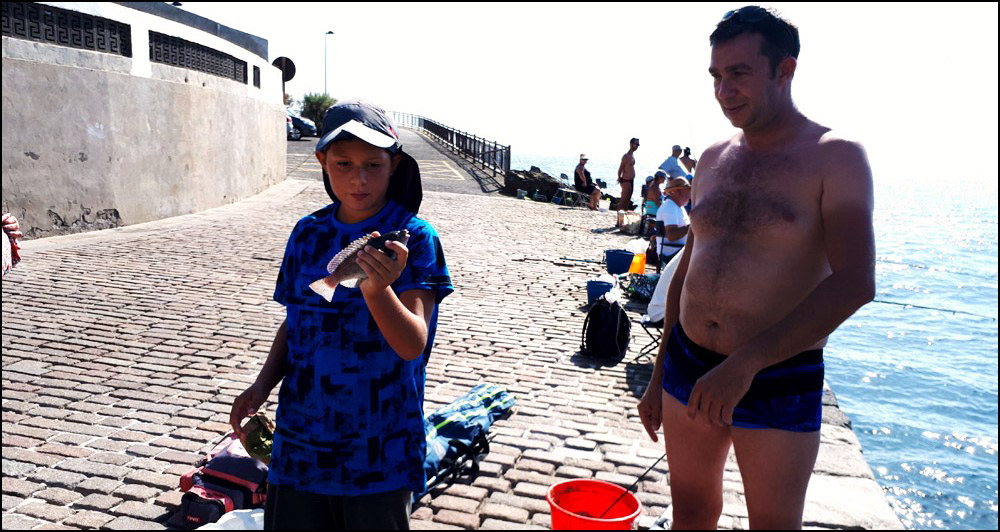
😔 Dealing with “No Catch” Days: Embrace the Journey, Not Just the Destination
Every angler, no matter how experienced, has faced the elusive “no catch” day. It can be frustrating, but remember, fishing is as much about the journey as it is about the catch.
- Mental Resilience: It’s okay to feel disappointed, but don’t be disheartened. Sometimes, it’s the challenges that make the successes even sweeter.
- The Unpredictable Nature: Fish are wild creatures. Their behavior can be affected by countless factors, many of which are beyond our control.
- Learning Opportunity: Use these days to refine your techniques, explore new fishing spots, or even just to enjoy the serenity of nature.
⛈ Tackling Difficult Conditions: Adapt & Overcome
Nature is ever-changing, and so must be our strategies.
Weather Challenges:
- Rain: Fish are more active as rain can wash insects into the water. Use this to your advantage, but ensure you’re geared up to stay dry.
- Wind: It can make casting a challenge. Consider casting with the wind or using heavier lures to counteract its force.
- Heat: Fish might go deeper to cooler waters. Consider fishing early mornings or late evenings.
Adapting to Water Types:
- Rapid Streams: Fish often stay in pockets where the current is slower. Cast upstream and let your bait drift down.
- Murky Waters: Bright or noisy lures can make a difference here as fish rely more on their other senses.
- Calm Lakes: Stealth is key. Avoid making too much noise or casting shadows over the water.
Remember, the best stories often come from the most challenging days. So, gear up, adapt, and enjoy every moment on the water. 🎣🌦
Hooked on Fishing: Ultimate Guide for Fishermen With No Experience
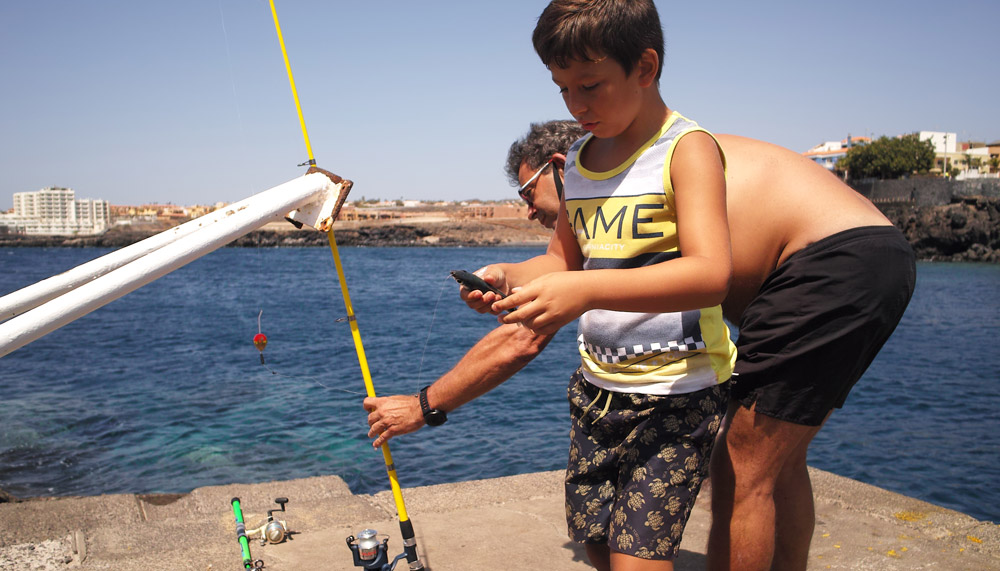
Fishing is an activity enjoyed by millions of people around the world. From the peacefulness of casting a line in a secluded lake to the excitement of reeling in a big catch in the open ocean, fishing offers a wide range of experiences for all ages and skill levels. If you’re new to fishing, it can seem overwhelming with all the different types of gear, techniques, and locations. However, with some basic knowledge and a little practice, anyone can start fishing and enjoy this rewarding hobby.
In this blog post, we’ll cover the essential information you need to know to start fishing, including the different types of fishing, the gear you’ll need, and where to find good fishing spots. Whether you’re interested in freshwater or saltwater fishing, fly fishing, or baitcasting, we’ll help you get started on your fishing journey. So grab your tackle box, put on your fishing hat, and let’s dive into the world of fishing.
After reading this article, you will understand how to start your fishing journey. Our material will be useful not only for beginners who are just going to learn the basics of fishing but also for experienced fishermen who want to refresh their knowledge of the basics and learn something new. Scroll down and you will find out everything you need to start fishing!
Start Simple: Why You Should Start Today
Have you ever found yourself standing at the edge of a picturesque lake, watching the gentle ripples of the water, and wondered what it would be like to cast a line and catch your own fish? Or maybe you’ve always been curious about fishing but feel overwhelmed with where to start.
Well, you’re not alone. Fishing is a popular pastime enjoyed by millions around the world, but getting started can be daunting. That’s why we’ve put together a full guide on how to start fishing, from the basics of choosing equipment and finding fishing spots to techniques for casting and reeling in your catch. So, let’s dive in and learn how to start fishing like a pro!
When you don’t know how to fish and are looking for advice from professionals on the Internet, you usually stumble upon a huge number of articles, publications, and materials that can blow your head. We recommend starting with the simplest – learn only 1-2 fishing techniques, one of the simplest but reliable knots (for example, clinch), choose one or two universal lures, and then continue to accumulate your knowledge. Some of them will come to you with experience, and the rest you will learn from other sources or from other anglers. To go out on the water for the first time, you do not need any huge store of knowledge.
Setting a Task: Essential Equipment for Beginners
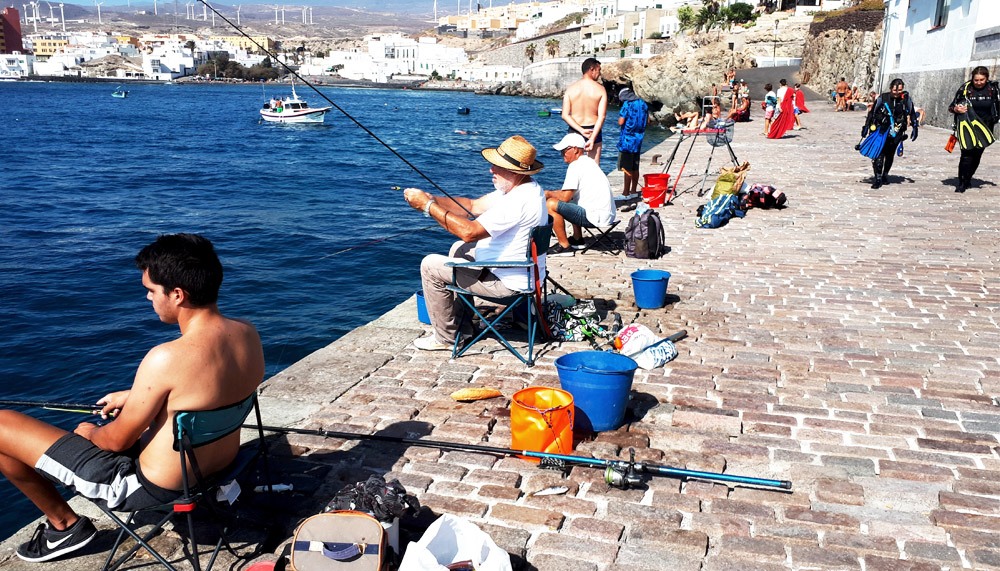
The guide begins by introducing the different types of fishing gear, including rods, reels, and lures, and explaining how to choose the right equipment for the type of fishing you want to do. It then covers the various types of fish you may encounter, such as bass, trout, and catfish, and provides tips on the best bait and techniques for catching each type of fish. The guide also includes information on fishing regulations and safety tips to ensure you have a successful and enjoyable fishing experience.
One of the main tasks when you first start fishing is to catch your first fish as easily as possible. Because learning all the aspects and subtleties of fishing requires a lot. And you can understand many things only with experience, on your own mistakes. The basics of fishing are the easiest to learn when trying to catch small freshwater fish. For example, panfish or perch. If you want to go to big fish right away, you will need better equipment, more fishing techniques, and more experience.
The second step is to find a fishing spot. It is important to look for a place that is convenient for you to get to. Because you are more likely to go fishing if you have a fast accessible, convenient, and comfortable fishing spot. It’s like going to the gym.
If you live close to the coast, then most of the fish you will find near the piers and large rocks near the coast. Going to fish in freshwater? Great, then the pond is your best option. Almost all of the ponds are filled with bass and bluegills. This is a great fish to start with.
The video is a typical spot for fishing from rocks in Tenerife:
Purchase a License: Why You Need a Fishing License and How to Get One
Okay, let’s say you’ve found a fishing spot. Now a very important step is to buy a fishing license. Without it, local authorities can penalize you and confiscate all fish.
The first time without a license, of course, you will most likely get off with a warning, but if you are caught fishing without a license several times, then you may even face imprisonment. Therefore, you need to decide on which body of water you are going to fish – fresh or salt. This will determine the type of license you are going to buy.
All experienced anglers buy a license every year and are very attentive to this process. The proceeds from the purchase of licenses go to stocking water bodies and managing ecosystems. You hardly need to go somewhere to get this document, because most states allow you to buy a license online and print it out on the same day. You just need to check the license requirements with your state. All of this can be found on the Internet.
From Bass to Trout: Understanding the Characteristics of Different Fish Species
Your state’s fisheries regulations are unlikely to end with just the acquisition of a license. They also include catch limits for specific fish species, species size, number of bags, and specific rules and restrictions that differ from state to state and region to region. Therefore, learn how to distinguish between fish species so that you can understand and follow these rules.
Customize Your Fishing Experience: Build Your Ideal Rod and Reel Combo
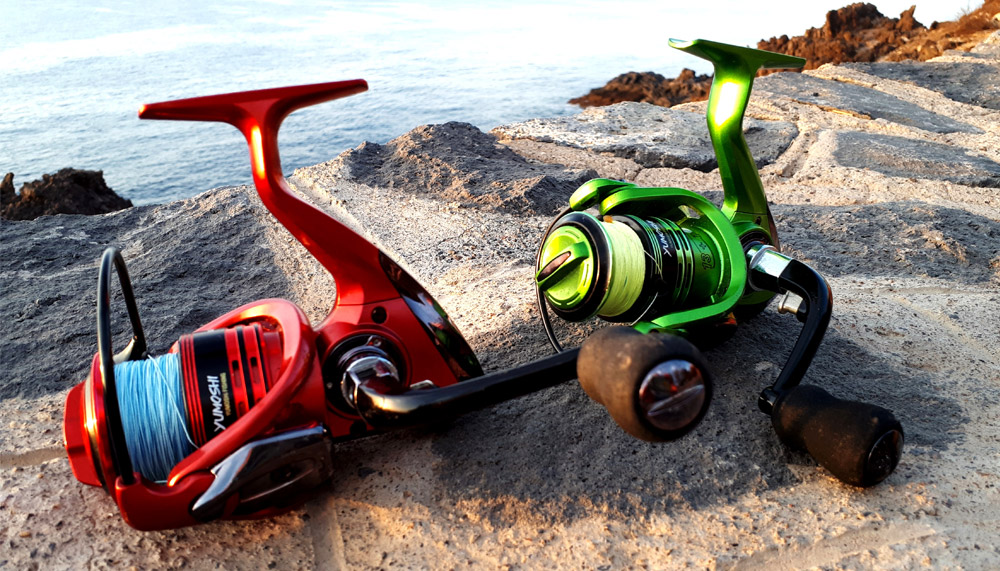
If you are a beginner and don’t want to spend a lot of money on your gear, you can get everything you need for fishing for as little as $10-20. All you need is a cane, graphite or fiberglass pole, a reel and line, and a couple of fishing gear.
Lines come in a variety of sizes, but we recommend that you choose the 6 or 8-pound freshwater test. If you are going to fish in saltwater, then take the 10-12 pound test.
Also don’t forget to get a couple of plastic bobbers, some BB weights, and 2-3 size hooks (size 3 will be needed for larger baits). If you want, you can buy a small tackle box that will allow you to store all your items very conveniently and in one place.
Also, you can buy a ready-made rod and reel combo. Then you will have no problems with compatibility, weight, and combo performance. You can ask the store clerk which combo is best for a beginner or ask him to pick a rod and reel just for you. Or you can read several articles on this topic, including on our blog. If you are unsure of which type of reel to choose, spin-cast and spinning reels are the best for beginners. They are as easy to use as possible and are available in every store.
Avoiding Overspooling: Tips and Tricks for Spooling Your Reel Correctly
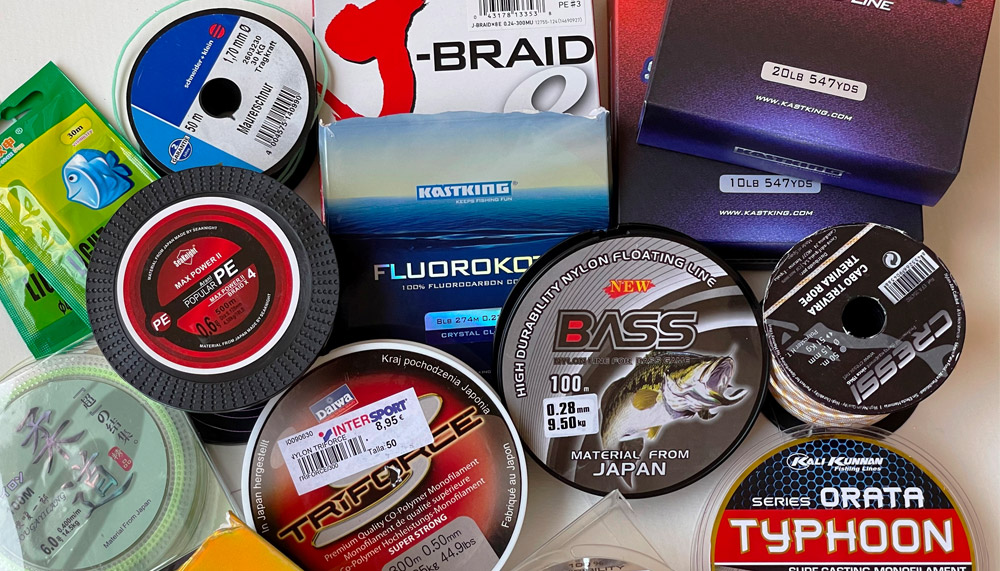
Your reel probably can handle about 200 yards of 6 lb monoline. But don’t over spool the reel. There should be approximately 1/8 inch between the spool rim and the wound line. This is necessary because fresh monofilament will twist to its original diameter, which was on the line spool you purchased. Always wind slightly less line than your spool can accommodate.
Choosing the Right Bait: Tips for Catching Your First Fish – Use Live Baits to Get Started
Most likely, when choosing baits, you will be choosing between live and artificial baits. As a rule, live baits are more suitable for beginners. Since they attract the fish best and make them bite. Once you get some experience with natural baits, you can easily switch to artificial baits and use them correctly to get your catch.
The most popular live baits are red worms, crickets, flies, minnows, and nightcrawlers. You can find minnows in a nearby stream and catch them with a net. After a couple of dives with a net in the water, you will have enough for good fishing. You can find crayfish under rocks and in dark places by the stream. They also work great as bait. Red worms and crickets often live in damp and humid places, such as under logs or fallen leaves.
In saltwater, fish like slightly different baits. These are mainly shrimps or crayfish. But trout loves corn kernels or small chunks of cheese. And the catfish loves ivory soap bars. You can always ask your fellow fishermen about the preferences in the bait of this or that fish or find out on the forums for fishermen. In the end, no one bothers you to experiment with baits and look for what works best for your fish.
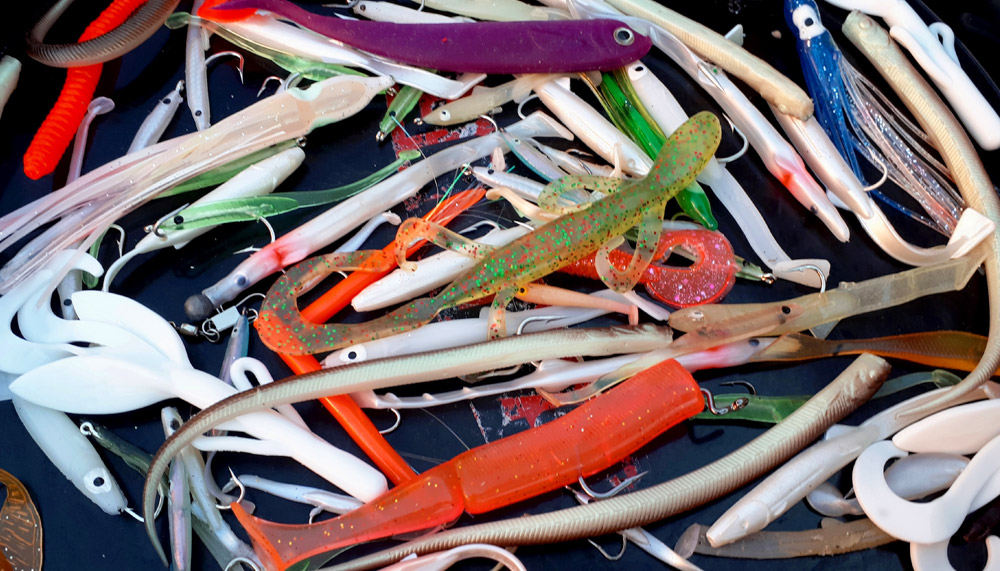
Attach the Line and Tie a Knot: Avoiding Common Mistakes When Tying Fishing Knots
Once you’ve got everything you need to fish, you need to attach a line to your rod and hook. To do this, cut the line about a foot longer than your rod, wrap it around the tip of the pole, and tie it very tightly. Then attach the other end of the line to the hook. You can attach the BB weight just above the hook, right above the bait. Choose a hook depending on your bait. A 3/0 hook is best for long worms, and a 1/0 or 2/0 hook for small shrimp and insects. Tie the hook to the other end of the line in a knot that won’t slip. There are knots that are simple enough for beginners to do without slipping and sitting pretty tight. These knots include Palomar, clinch, improved clinch. Take the time and energy to tie a really good knot. Because, as you know, bad knots lose good fish.
Set the Bobber and Cast
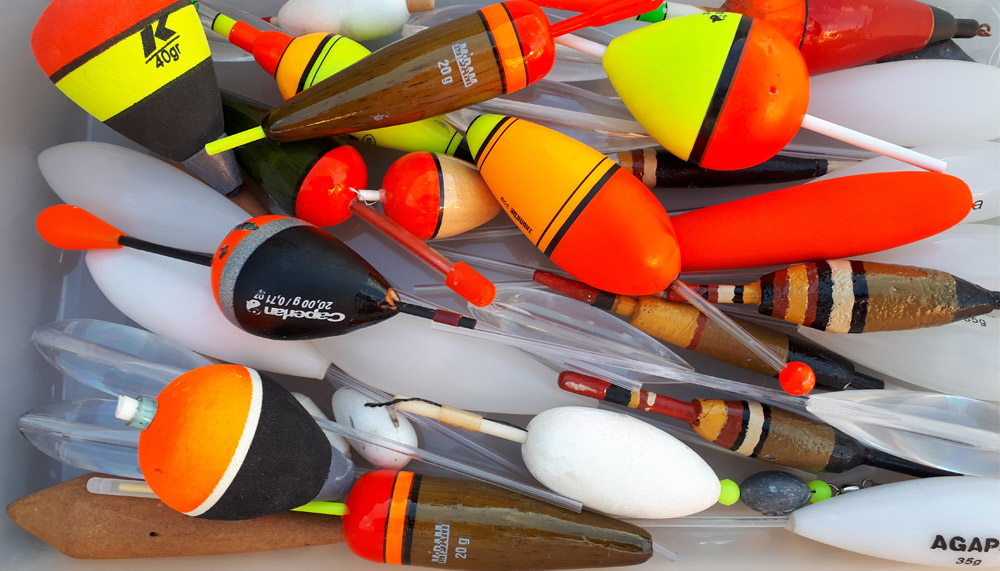
Once you’ve attached the weight and hook, all that’s left is to install the bobber. It is secured about two feet above the hook. Longer if you are going to lower the bait deeper. Now you simply pull the rod over the water and lower it until the bobber wobbles in the water. Keep the rod steady, parallel to the water level, and try not to shake it.
Patience is a Virtue: Tips for Waiting Out the Big Catch
Now comes the neat and impatient part of fishing – waiting for the fish to bite. Fishing will always require patience and calmness from you. On average, the fish searches for your bait hook for a few minutes, but it can be faster or longer. So always be prepared to wait and keep a close eye on the bobber. As soon as it starts to pull down a little, bounce or shake – the fish tries to eat your bait. You will feel it with your own hands.
Set the Hook: Common Mistakes to Avoid When Setting the Hook
You will notice that the fish is trying to bite your bait when you see the bobber start to twitch in different directions and sink slightly into the water. Take your time to immediately grab the rod and pull up. If your bobber is not completely submerged in water, give the fish 5-10 seconds to bite. Panfish and other small fish are too weak to completely submerge your bobber. They need time to grab your hook. And if you are impatient, and didn’t wait 5 seconds, then you risk simply pulling the bait out of the mouth of the fish. Don’t worry, the feeling of when to set the hook develops over time.
Remove the Fish Carefully: Best Practices for Releasing Fish Safely

After the “10 second rule”, you need to start retrieving the spool and placing the hook. First, pull the line so that it becomes taut. Lift the tip of the rod up a few inches to insert the hook into its mouth. Don’t pull too hard to catch fish. Monitor line tension and fish movement and slowly wind the reel towards you. Do not wind too fast or too harshly, otherwise the bobber may get stuck at the top of the rod. You will not only break the line but also miss the fish. When the fish begins to float above the water, lift your rod straight up to direct the fish towards you.
Most fish you catch are unlikely to have sharp teeth that can hurt you. But on the other hand, many (perch, ruff) have very sharp fins, on which you can easily cut yourself. Therefore, we highly recommend that you take the fish very carefully, by the sides or head, but in no case grab the fin or tail sharply. You can remove the hook with your other hand or with pliers.
Catch and Release: Ethical Fishing Practices for Conservation
If eating fish was not part of your plans today, then you should carefully release it back into the water. Submerge it with your hands in the water in the same position as we recommended you grab it in the previous paragraph. Or you can place it in the palm of your hand and hold it with your fingers at the sides.
This is both convenient and minimizes the chances of being cut on your fins. In most cases, the fish will almost immediately start kicking and trying to swim away. But if this does not happen, try to move its tail back and forth until the fish starts kicking. If the fish has accidentally died while on land, take the fish with you to eat or dispose of according to state disposal regulations.
My Best Tips for Beginners: Advancing Your Fishing Skills and Knowledge
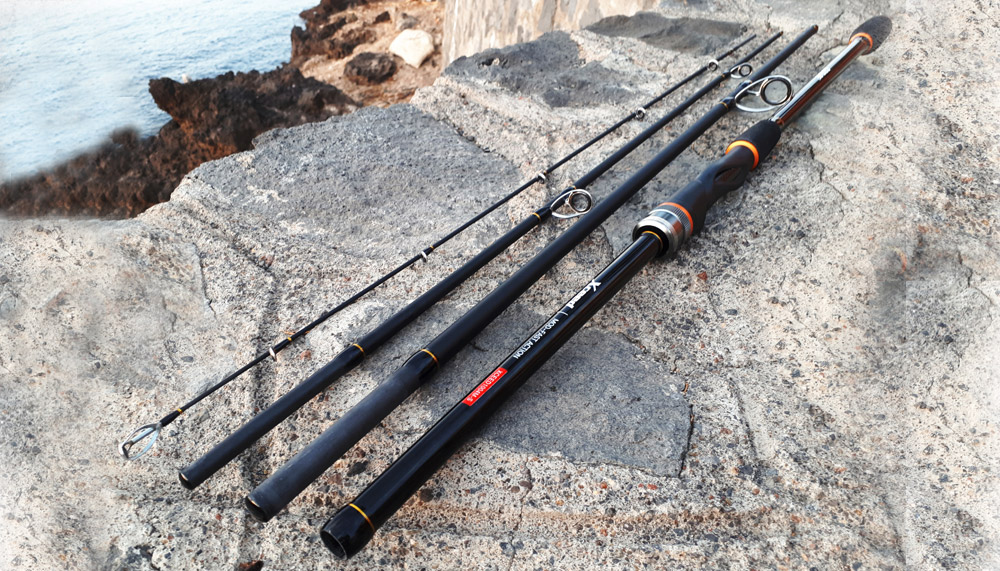
The most important advice I can give you is to fish in a company. It doesn’t matter if it’s your best friend, wife, or colleague, you will learn to fish faster and be able to catch more fish. Regardless of your partner’s experience, you will either learn it very quickly and gain a lot of experience from him anyway, or improve your skills by teaching someone. It’s simple math: your chances of catching fish are twice as high if you have two lines dangling in the water instead of just one.
Don’t Forget Fishing Etiquette: Building Memories on the Water
To be treated well by other anglers, you need to remember fishing etiquette. This is not a very difficult set of recommendations that every beginner can follow.
Be respectful of the anglers who fish near you, the fish you catch, and the environment you are in. Do not stand two meters next to another angler who is fishing. We recommend giving other anglers 50 to 60 feet of space when crowded and at least 200-300 yards when there are few people around.
Don’t leave more fish than you can eat and don’t leave trash behind. Make sure you know all the rules and restrictions of the area you are fishing in. This can be fishing and releasing, areas without live bait, or just fly fishing. This is not always written on a sign near the site, so you will sometimes need to check your state forestry website to find out.
A Couple of Useful Resources
In addition to the general guide, we have put together a few useful resources for you to help you grow faster in fishing.
The first is the guide. Finding the perfect fishing spot: a guide to location scouting. Hiring a guide will greatly help you find the best fishing spots and improve your fishing progress. The guides know a lot about the local rivers and lakes and can teach you how to read the water better, choose lures, and look for the best fishing spots. Local fishing communities or your area’s forestry department are great alternatives to guides. Communities can also offer you activities such as fishing derbies, free fishing days (no license), and other activities to meet anglers and improve networking.
Most of the time, YouTube will be your best friend. No matter what you want to learn – tying knots, winding a line correctly on a reel, or choosing a bait, on YouTube you will find guides for every taste and need.
And the third is our blog. Our site is happy to present you with a bunch of fishing articles, including for beginners. So if you prefer text information, you are welcome.
Troubleshooting: Common Fishing Problems and How to Solve Them
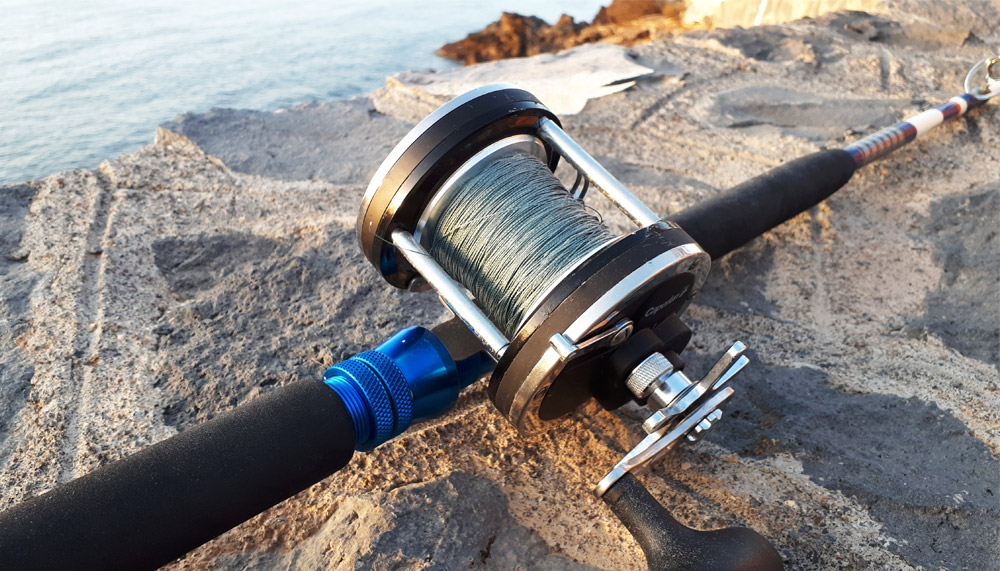
Common Fishing Problems and How to Solve Them is a topics that every angler should be familiar with. No matter how skilled or experienced you are, there are always unexpected challenges that can arise while fishing. From equipment malfunctions to unfavorable weather conditions, there are many potential obstacles that can stand between you and a successful fishing trip:
- Line Twists: One of the most common problems encountered by beginner anglers is line twists. This occurs when the line becomes tangled, causing it to twist and knot up. To prevent this, it is important to properly spool the line on the reel and avoid overfilling it. Also, it is important to ensure that the line is properly stretched before fishing to eliminate any potential twists.
- Poor Casting: Another common problem for beginner anglers is poor casting. This can result in the line falling short of the intended target or becoming tangled in the surrounding foliage. To prevent this, it is important to properly adjust the rod and reel, practice proper casting techniques, and consider using a casting aid such as a casting plug.
- Wrong Bait or Lure: Choosing the wrong bait or lure can also be a common issue for beginner anglers. Different species of fish have different feeding habits and preferences, so it is important to do research or ask local experts for advice on which bait or lure to use.
- Poor Hook Setting: Setting the hook too hard or too softly can result in missed opportunities or lost fish. Proper technique involves gently lifting the rod to set the hook when you feel the fish bite, then reeling in to secure the catch.
- Improper Fish Handling: Improper fish handling can also be a problem for beginner anglers, leading to injury or death of the fish. It is important to use the proper tools such as pliers to remove the hook, avoid touching the fish’s gills, and quickly return the fish to the water.
👥 Building Your Fishing Community: Dive into the World of Fellow Anglers 👥
🤝 Joining Local Fishing Clubs: Beyond the Shoreline
As with many hobbies and sports, fishing becomes even more enriching when shared with others.
Benefits of a Fishing Community:
- Shared Knowledge: Every angler has a unique set of experiences and tricks. Being part of a club means pooling this wealth of knowledge.
- Group Trips: Exploring new waters becomes more feasible, safe, and enjoyable when planned as a group.
- Mentorship: Experienced members often mentor newcomers, providing hands-on guidance and ensuring quicker skill development.
- Social Connections: It’s not just about the fish. Forge deep friendships and create lasting memories over campfires and shared tales.
🏆 Fishing Tournaments: Elevate Your Angling Game
For those who love a dash of competition with their tranquility, fishing tournaments can be the next big step.
Understanding the Basics:
- Types: From bass fishing tournaments to fly fishing competitions, there’s a niche for every angler.
- Rules & Regulations: Each tournament will have its own set of guidelines, such as catch and release policies or fish size and type requirements.
- Skill Level: Don’t be deterred if you’re a novice. Many tournaments have different categories or are designed specifically for beginners.
Benefits:
- Skill Improvement: The competitive atmosphere pushes anglers to refine their techniques and strategies.
- Networking: Meet and learn from some of the best in the field.
- Rewards: Beyond potential prizes, the thrill of competition and camaraderie are rewards in their own right.
Embracing the fishing community can profoundly transform your angling journey, turning solitary outings into shared adventures and challenges into collective achievements. 🎣🌍
📚 Continuous Learning & Mastery: The Ever-Evolving Journey of an Angler 📚
📖 Resources for Growth: Never Stop Casting for Knowledge
The world of fishing is as vast as the oceans, and there’s always more to explore and understand.
Books to Dive Into:
- “The Complete Angler” by Izaak Walton: A timeless classic that beautifully intertwines fishing with philosophy.
- “The Little Red Book of Fly Fishing” by Kirk Deeter and Charlie Meyers: A gem for those looking to refine their fly fishing techniques.
Online Platforms for Modern Anglers:
- Online Courses: Websites like Udemy or Coursera offer comprehensive courses, ranging from beginner’s guides to advanced fishing tactics.
- YouTube Channels: Many experienced anglers share their journeys, tips, and tutorials, offering visual insights that can be invaluable.
Workshops & Seminars:
Local fishing clubs often host workshops led by professionals. It’s an excellent opportunity for hands-on learning and immediate feedback.
🔄 The Evolution of a Fisherman: It’s About the Journey, Not the Destination
While that initial thrill of your first catch is incomparable, the true essence of fishing lies in the continuous journey and the nuances one picks up along the way.
- Constant Adaptation: The waters change, fish behaviors evolve, and new equipment emerges. Staying updated ensures you’re always at the top of your game.
- Reflection: Every trip is an opportunity to reflect on what went right, what went wrong, and how you can improve next time.
- Embracing Failures: Not every outing will be a success, but each one is a lesson. Understanding this is crucial for growth and sustained passion.
Conclusion
In this blog, we have covered a range of topics to help beginners get started in fishing. We have discussed common fishing problems and how to solve them, how to purchase a license, how to distinguish fish by species, and how to make a fishing rod and reel combo. We have also covered important steps such as attaching the line and tying a knot, setting the bobber and casting, setting the hook, and removing the fish carefully.
Fishing is not only a fun activity, but it also provides numerous benefits, including stress relief, improved physical fitness, and a connection with nature. With the right equipment and knowledge, beginners can start fishing and enjoy all the benefits that come with it. By following the tips and steps outlined in this blog, beginners can overcome common problems, learn important skills, and have a successful and enjoyable fishing experience. Remember to always respect the environment and practice safe and responsible fishing practices.
We know how difficult fishing may seem at first. But this is not always the case, and we decided to prove it. All you need is a little tackle, a fishing license, a rod, a reel, a piece of mono string, and a couple of worms dug under a tree by the house to catch your first fish.
In the future, you can easily develop your skills and master new techniques, reels, and types of fishing. While it can be very intimidating at first, fishing can be one of the easiest outdoor hobbies for you, with millions of anglers around the world already connected. We hope our post was helpful to you.
Tags: #guide to fishing for the first time / #how to start fishing / #how to actually start fishing / #how to fish / #fishing for beginners / #what you need to start fishing for the first time / #guide to your first days fishing / #what you need to start fishing

I live in Tenerife (Canary Islands) for the last 10+ years and share my daily fishing experiences on my website. Many years of personal experience as a fisherman and the vast experience of my friends allow me to write professionally on any fishing topics (from choosing a flashlight and equipment to deep-sea fishing).
All of my advice is based on practical real-world experience and will be useful to both novice anglers and professionals. Read more about the author.
Affiliate Disclosure: FishReeler.org sometimes gets paid for listings, through sponsors or affiliate programs like Amazon, Ebay, Cabelas, Bass Pro Shop, Shimano, Daiwa, Rapala, Renn, Okuma, KastKing, etс. Clicking a link helps keep FishReeler.org free, at no extra cost to you!
About the author: Each article is verified by the fishing expert Sergio Smirnoff. The articles are written by professional and amateur fishermen with 20+ years of fishing experience.
Note: The views and opinions expressed in this article are those of the authors and do not necessarily reflect the official policy or position of any agency. The articles are for informational purposes only, share your opinions in the comments and join the fishing discussions, let's share our fishing experiences together!

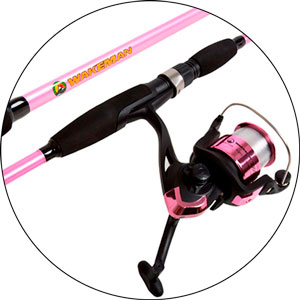
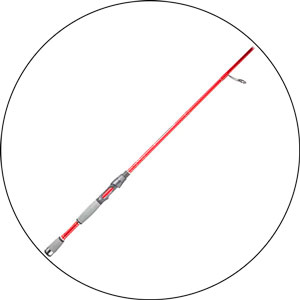
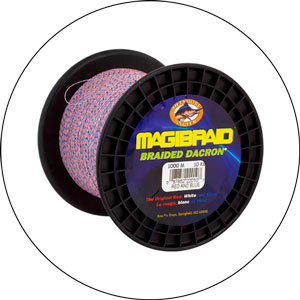
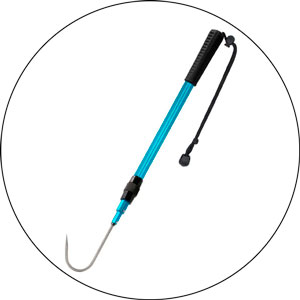
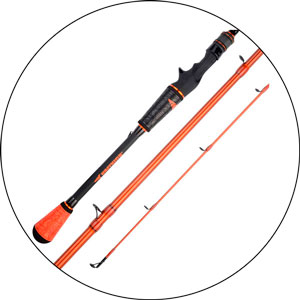
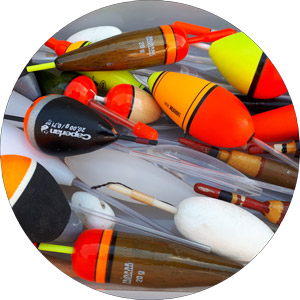
As someone who never went fishing before, I understand how daunting it can seem to get started. But let me tell you, it’s actually much easier than you think!
First things first, you’ll need some basic equipment such as a rod and reel or a hand line. Don’t worry about spending too much money on it as you can get everything you need for the cost of a family movie ticket.
Depending on where you live or where you’re planning to go on vacation, the type of fishing you can do and the species you can catch will vary. But the good news is that the principles of fishing remain the same, so you can use your tackle anywhere.
I recommend starting out by fishing in calm waters like a lake, river with a slow current, sheltered beach, or marina. This way, you can use smaller rods and lighter tackle which require less skill and strength compared to larger gear like surf rods.
If you’re unsure about how to get started, check out the “How-to” section for step-by-step instructions on setting up your rod, tying knots, attaching bait or lures, casting, catching, and releasing fish. Trust me, it’s much simpler than you think, and it provides endless entertainment and outdoor fun that you and your family can enjoy together.
So don’t be afraid to give fishing a try, and who knows, you might even discover a new hobby!
Hey everyone! Are you looking for a fun outdoor activity to try out? Fishing is a great option! Here are some simple steps to get started:
STEP 1: KEEP IT SIMPLE
You don’t need fancy gear to start fishing. A basic fishing rod made of cane, fiberglass, or graphite, can be purchased for about $10 at a bait or discount store. You’ll also need some monofilament fishing line (6-8 pounds for fresh water, 10-12 pounds for saltwater), plastic floats, shot weights, hooks (size 2 for small bait, up to size 3/0 for large bait), and a tackle box to keep it all organized.
STEP 2: GET YOUR BAIT
While you can purchase bait at a store, it’s more fun to catch your own! You can use gudgeons, moths, worms, and crickets. Look for them in nearby creeks or under rocks, logs, and fallen leaves.
STEP 3: ATTACH YOUR LINE
Cut a piece of fishing line about a foot longer than the length of the pole. Wrap the end around the tip of the pole and tie it tightly.
STEP 4: TIE YOUR HOOK
Match your hook size to your bait (size 3/0 for long worms, 1/0 for small shrimp, etc.). Use a knot that won’t slip, like the PALOMAR knot, to tie the hook to the opposite end of the line. Make sure to wet the knot before tightening it.
STEP 5: FIND A GOOD FISHING SPOT
If you live near the coast, you can fish off of piers or large rocks. If you live inland, ponds are a great place to start. Many are stocked with bluegill and bass.
STEP 6: TRY BOBBER FISHING
Attach the float above your line, about two feet to start, and lower it into the water. Hold the pole horizontally and wait for the fish to bite.
STEP 7: BE PATIENT
Fishing requires patience! It may take a few minutes for the fish to find the bait. Keep an eye on your float – if it jumps or shakes, a fish is likely biting!
STEP 8: SET THE HOOK
When the float is fully submerged, quickly lift the rod to set the hook. Point the rod straight up to bring the fish towards you.
STEP 9: HANDLE THE FISH WITH CARE
Most fish caught from shore don’t have sharp teeth, but many have spiny fins. Hold the fish firmly by the head and use needle-nose pliers to remove the hook.
STEP 10: TAKE A PICTURE AND RELEASE THE FISH
Take a picture of your catch and carefully release the fish back into the water. It will swim away, grow bigger, and can be caught another day!
So there you have it! Follow these simple steps and you’ll be on your way to enjoying a relaxing and rewarding fishing trip.
Wow, what a great guide to fishing for beginners! As someone who has never been fishing before, I found this article really informative and helpful.
It’s interesting to learn about the different types of fishing available in the UK, including coarse fishing, game fishing, and sea fishing. I had no idea that there were so many species of fish to catch in freshwater!
One of the most important things to do before starting fishing is to get a license. It’s great to know that licenses are affordable and can be purchased online, making it easy to get started.
Finding a good fishing spot is also key. The resource provided in the article is a great tool for finding popular fishing spots near you. I’ll definitely be using this to plan my first fishing trip!
As a beginner, stick, and whip fishing seems like a great place to start. It’s easy to learn and requires minimal equipment. I appreciate the tips on how to use a plumb line to determine how deep the water is and adjust the float accordingly. The idea of catching fish without a reel seems daunting, but I’m excited to try it out.
The list of rod and line fishing kits is also really helpful. I’ll be sure to keep these in mind when shopping for fishing gear.
I can’t wait to get out there and start catching some fish!
Thank you for this helpful guide on fishing for beginners! I have always been interested in trying it out but didn’t know where to start. Your checklist for freshwater fishing and tips on tackle, casting, and accessories make it seem less intimidating. I appreciate the emphasis on safety and conservation practices as well. I’m excited to find a nearby spot and give it a try!
I highly recommend freshwater fishing to anyone looking for a fun and relaxing way to spend time outdoors with family and friends. Don’t be intimidated if you’re new to fishing or haven’t tried it in a while – with a few basic supplies and some know-how, you can be casting your line in no time!
First and foremost, make sure you have a valid fishing license for your state (if required based on your age). You’ll also need a fishing rod and reel, 4 to 12 pounds of monofilament fishing line, a fishing weight package, fishing hooks (size #6-10), plastic or cork float, and an assortment of bait or fishing lures. You can find all of these supplies at your local fishing tackle or sporting goods store.
Once you have your supplies, it’s important to learn about the types of fish you can catch in your area and how to tie the Improved Clinch Knot. This knot is essential for securing your hook to the line and ensuring that you don’t lose your catch.
When you’re ready to start fishing, attach your hook to the line and add 1 or 2 weights 6 to 12 inches above the hook. The weight will keep your bait or lure in the water and help cast it away from the shore. Attach the float to the line with a spring clip and adjust it to the desired depth.
For beginners, I recommend using spinning or spinning tackle. This type of gear allows you to cast longer distances with greater accuracy, work baits efficiently, fish in deeper water, and catch larger fish more easily. Spinning gear uses a pistol grip rod and reels attached to the top of the rod handle, and the line is released with a button on the reel.
To practice casting, tie an inexpensive rubber-covered weight called a casting plug to the line using the advanced wedge knot. Find an open area away from other people and practice casting until you feel comfortable with your technique.
Don’t forget to bring along some accessories such as a tackle box to hold your bait, hooks, sinkers, and tools, as well as a container for live bait, a stringer or ice box to keep your catch fresh, a netting bag, and a first aid kit.
Always practice catches and release to ensure that fish are not wasted. If you catch a fish that is too small or that you don’t want to keep, release it immediately. Handle the fish carefully and release it back into the water when it starts to wiggle and can swim normally.
Safety is also important when fishing. Always fish with a companion who can offer help in case of an emergency, be careful when handling sharp hooks, and wear a Coast Guard-approved personal rescue device or life jacket when wading or boating. And remember to respect our natural resources by collecting and recycling fishing lines and other waste.
Now that you have all the basics, it’s time to find a good fishing spot and start casting your line. Look for areas where the bottom changes in some way – from sand to gravel or from sand to silt – and be sure to stay calm and not disturb the water. Once you’ve found a good spot, put your bait on the hook, throw it as far from shore as possible, and watch the float. When a fish bites, quickly lift the tip of the rod to set the hook and reel in your catch.
Great advice for beginners! I started fishing with a simple rod and reel from Walmart too and caught plenty of fish with it. I definitely agree that it’s important to not get overwhelmed with too much information and gear. A spinning rod of light to medium build is a great choice for beginners, especially when bought in a set with a reel.
I also recommend getting a 1 or 2-section rod rather than a telescopic rod. As for the reel, a gear ratio of 4 to 5.2:1 with at least a pair of ball bearings and line power suitable for 6 to 10-pound lines is perfect for most freshwater species. KastKing Premium Monofilament line is a great option for the line, and slip floats are practical and easy to use for bait on a hook. Thanks for sharing this helpful information!
Great advice for beginner anglers! As someone who has just started fishing, I found this article very helpful. I appreciate the straightforward approach to selecting fishing gear, as it can be overwhelming with all the options available.
Starting with a simple and affordable rod and reel combo is definitely the way to go. I opted for a spinning rod that is 6-7 inches in length, and it has served me well. The reel that came with it has a gear ratio of 4-5.2:1, a pair of ball bearings, and a smooth-friction system. It is perfect for catching freshwater species like roach, minnow, redfin, tench, bass, perch, bluegill, bream, crappie, and smaller northern pike and pikeperch.
I also learned about the importance of using the right line strength. I started with a 6-8 pound line, which is suitable for most fish I’ll be targeting. The KastKing Premium Monofilament line is a great choice, and I appreciate the link to where I can buy it on Amazon.
The advice on floats and indicators is also very helpful. I’ve been using slip floats and have found them to be practical and easy to use.
Thanks for sharing your knowledge and experience with us! I’m looking forward to using this advice on my next fishing trip.
This is great advice for beginners, especially those who are looking to catch flathead, bream, and whiting. Flatheads are known for being both fun to catch and delicious to eat, but they can be elusive. The key is to look for areas where they are likely to be hiding, such as large sand or mud flats that drain on a falling tide into gutters.
To get started, use tools like Google Earth or Navionics to identify these areas on your computer or phone. Look for signs of baitfish and mullet showering, as well as feeding pelicans, which can indicate that there are concentrations of baitfish in the area.
When targeting flathead, use a balanced 3-6kg spin combo with a medium to fast tapered 7ft rod and 2500/3500 size reel. Use a braided main line around 15-20lbs with a 10kg fluorocarbon leader, and a standard running sinker rig if using fresh bait. Alternatively, lures can be even more effective, with Squidgy Fish in the 70mm & 100mm sizes in black & gold & silver fox colors being a go-to option.
Other species like whiting and bream can also be caught in these same areas, using live prawns or mullet as bait or Squidgy Wrigglers in the 80mm & 100mm sizes or the New Pro-Prawn range in a color to match the most common food items in the area.
Bream and whiting will generally fish best on the first few hours of the run in the tide as the water pushes up onto the flats allowing them to get up and forage for worms, nippers, crabs, etc. until they disperse across the flat and into the mangroves. A light 7ft spin combo with a 1000 – 2500 size reel and 2kg-4kgs braid with a 6 – 8 lb fluorocarbon leader is ideal for these species.